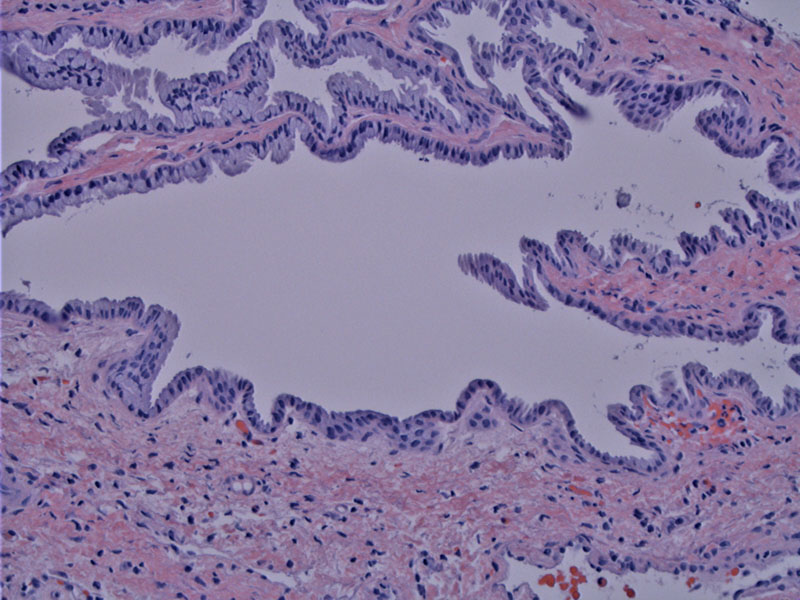

Simple cyst in the wall of the vagina lined by endocervical-type epithelium containing bluish mucin.
Vaginal cysts are quite common, reported to be found in 1 in 200 women, although this is likely under-reported as most cysts remain asymptomatic (Hwang). In a study of 40 cases of benign vaginal cysts, 30% were Mullerian cysts (lined by endocervical-type or cuboidal epithelium), 27.5% were Bartholin duct cysts, 25% were epidermal inclusion cysts and 12.5% were Gartner duct cysts (Kondi).
Adenocarcinoma arising from a vaginal mullerian cyst is extremely rare, but has been documented in the literature (Lee). The relationship of vaginal cysts to vaginal adenosis and DES exposure has not been thoroughly investigated.
Cysts can vary in size from 1 to 7 cm in diameter. Usually an incidental finding, but may present with discomfort, a sense of fullness or incontinence. Found most frequently in women in their third and fourth decades and rarely in pre-pubertal women (Hwang).
No treatment required if asymptomatic. Excision may be offered if the patient is experiencing bothersome symptoms. If the cyst is fixed or rapidly enlarging, further workup may be indicated to exclude a more worrisome process.
Hwang JH, Oh MJ, Lee NW et al. Multiple vaginal mullerian cysts: a case report and review of literature. Arch Gynecol Obstet. 2009 Jul;280(1):137-9. Epub 2008 Dec 5.
Kondi-Pafiti A, Grapsa D, Papakonstantinou K et al. Vaginal cysts: a common pathologic entity revisited. Clin Exp Obstet Gynecol. 2008;35(1):41-4.
Lee KS, Park KH, Lee S, et al. Adenocarcinoma arising in a vaginal müllerian cyst: a case report. Gynecol Oncol. 2005 Dec;99(3):767-9. Epub 2005 Sep 16.